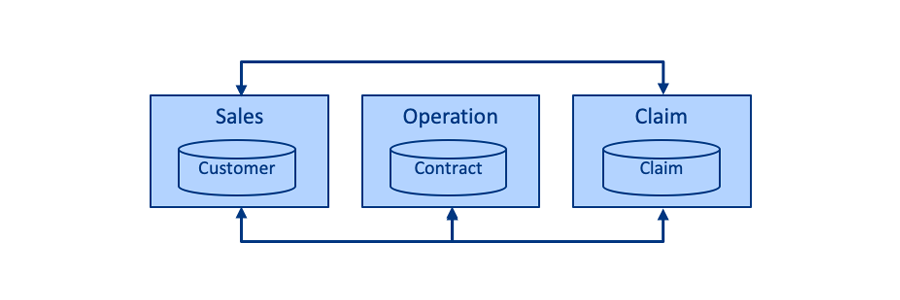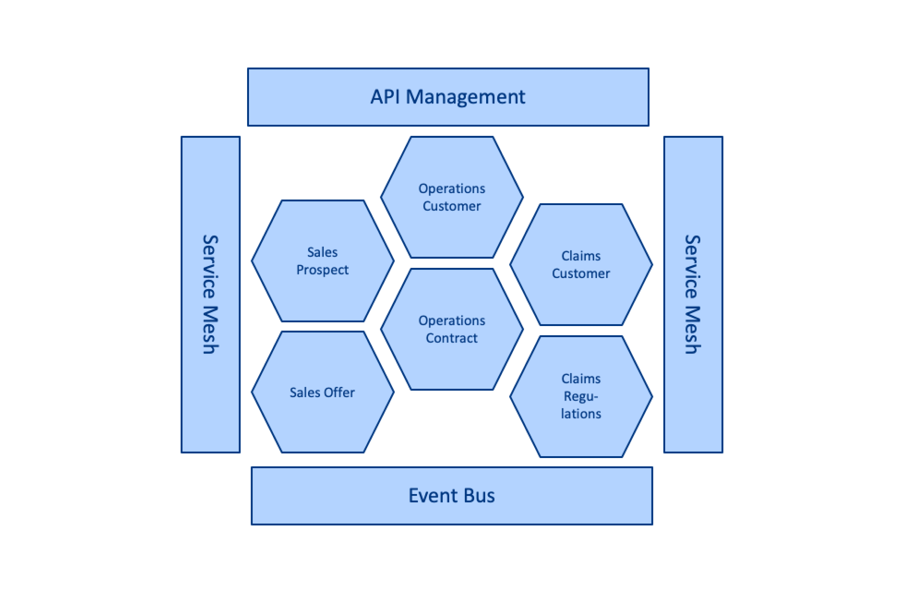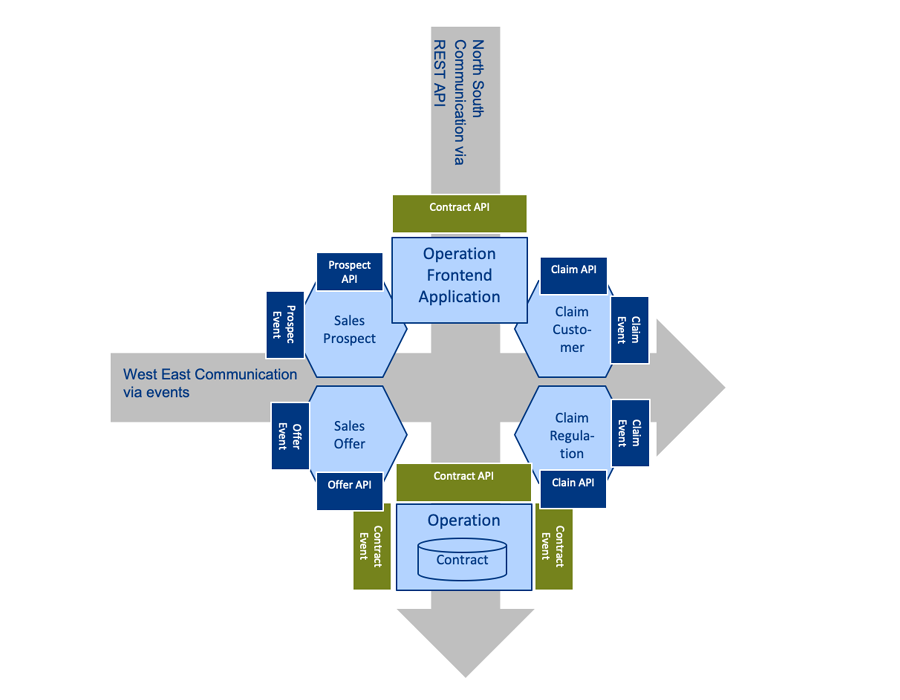iSAQB Software Architecture Gathering 2025

Figure 1 Peer to peer integration of domains

Figure 2 Enterprise Service Bus as integration architecture of domains

Figure 3 Integration architecture and Microservices

Figure 4 Hybrid integration architecture with different communications
[1] N.N. Integration Architecture, https://www.techopedia.com/definition/30625/integration-architecture, retrieved 26.08.2021
[2] Wikipedia: API Management, 4.11.2020, https://en.wikipedia.org/wiki/API_management, abgerufen 30.08.2021
[3] Junker, A.: Lösungsmuster für Cross-Cutting-Concerns, 30. Juni 2020, https://www.informatik-aktuell.de/entwicklung/methoden/loesungsmuster-fuer-cross-cutting-concerns-in-microservices.html#c32075, retrieved 31.8.2021
Sponsoring a conference is a terrific way to support and connect with our global community of software architects.
You need to load content from reCAPTCHA to submit the form. Please note that doing so will share data with third-party providers.
More InformationYou need to load content from Turnstile to submit the form. Please note that doing so will share data with third-party providers.
More InformationYou need to load content from reCAPTCHA to submit the form. Please note that doing so will share data with third-party providers.
More InformationYou need to load content from reCAPTCHA to submit the form. Please note that doing so will share data with third-party providers.
More InformationYou are currently viewing a placeholder content from Facebook. To access the actual content, click the button below. Please note that doing so will share data with third-party providers.
More InformationYou are currently viewing a placeholder content from Instagram. To access the actual content, click the button below. Please note that doing so will share data with third-party providers.
More InformationYou are currently viewing a placeholder content from Newsletter2Go. To access the actual content, click the button below. Please note that doing so will share data with third-party providers.
More InformationYou are currently viewing a placeholder content from Google Maps. To access the actual content, click the button below. Please note that doing so will share data with third-party providers.
More InformationYou are currently viewing a placeholder content from X. To access the actual content, click the button below. Please note that doing so will share data with third-party providers.
More Information